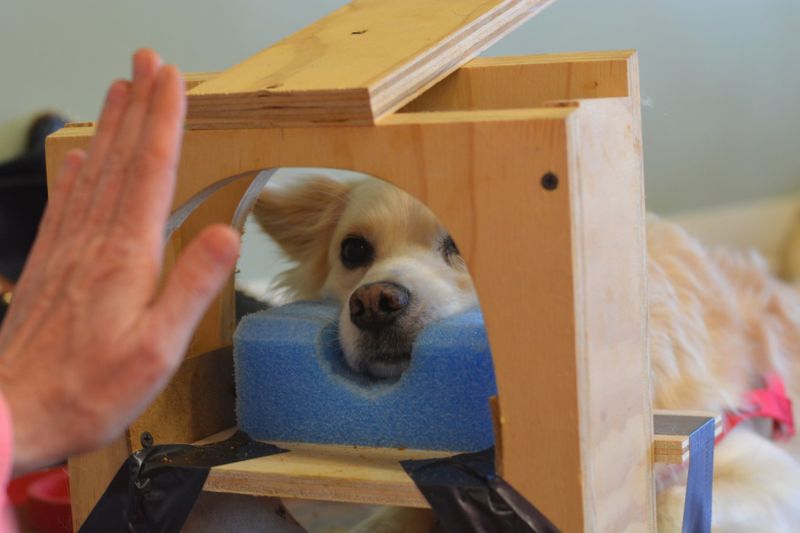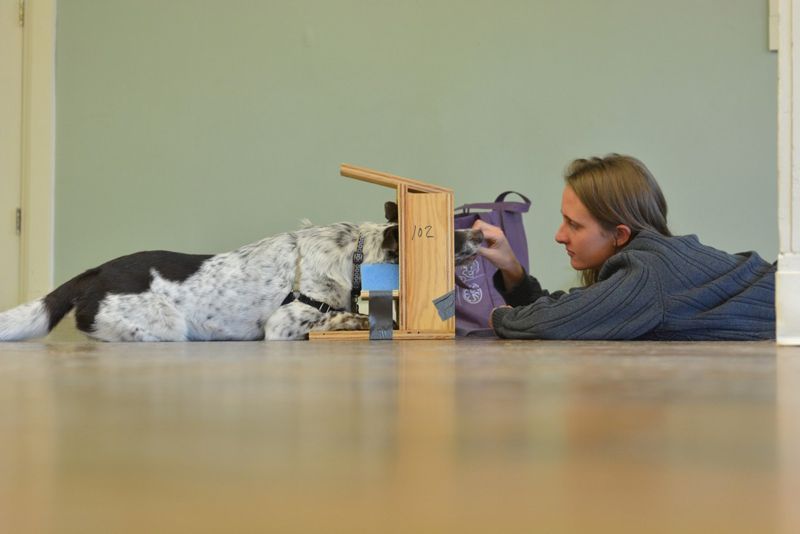Minds over matters
How functional MRI can identify animals’ anxieties and prevent problem behaviors

For the last six years, as part of our study of canine cognition, my colleagues and I at Emory University in Atlanta have been teaching dogs to lie still during MRI procedures without restraint or sedation.
In humans, we use a technique called functional MRI (fMRI) to measure brain activity while the person is engaged in some type of mental task. The great thing about fMRI is that it doesn’t require any injections or radioactivity, and it provides a window into the workings of the brain. In 2011, I launched a project to see if fMRI would also work with dogs to see what they’re thinking and feeling. It began with Callie, my adopted terrier-mix, who learned to lie in the scanner for a steady supply of praise and treats. Our early success paved the way for other people to volunteer to train their dogs for fMRI. Within a year we had a team of a dozen “MRI-dogs.”
Our initial focus was on identifying common characteristics of how dogs think—in our case, by using fMRI as a sort of roadmap to the architecture of canine cognition. Indeed, we have identified parts of the dog brain that respond to reward—both food and praise—in a manner similar to the corresponding structures in the human brain. And also as with humans, we have found a region of the dog brain that responds specifically to faces. These results point to sweeping commonalities in both structure and function between the brains of dogs and humans, and provide foundational information about how dogs’ brains work.

But now, after training and scanning over 90 dogs on dozens of different tasks, I am most struck by how different each dog is. These subtle differences are the sorts of things you only appreciate after studying many individuals.
In one experiment, we trained the dogs on a version of the famous marshmallow test, which measured children’s ability to wait 15 minutes for a treat—marshmallows. For our canine version, we taught the MRI-dogs to nose-poke a target when they heard a whistle. Then we trained them that arms raised in an “X” meant: Don’t poke the target even when you hear the whistle. Psychologists call this a go/no-go test. Like the marshmallow test, it measures self-control. In humans, it requires a functioning prefrontal lobe to do it well. We found the same thing with dogs. But, like humans, the dogs had varying levels of ability. Those dogs who deployed more of their prefrontal lobes to inhibit their tendency to poke the target did better on the task.
The go/no-go and marshmallow tests measure aspects of impulse control—that tendency to react in the moment regardless of the consequences. For shelter animals, impulse control may mean the difference between a life with an adoptive family or being slated for euthanasia. As shelter intake staff know all too well, many dogs are surrendered due to an inability to curb such impulses as barking, biting, chewing and peeing. The fMRI results suggest that interventions aimed at improving prefrontal function may also help a dog to gain the self-control necessary to live in a human household. For example, “prefrontal” activities, like problem-solving, may also aid in the development of other prefrontal functions like learning to control the impulse to bark at strangers. And a dog who has better self-control is more likely to get adopted.

MRI is like a window into the dog’s mind. We are rapidly moving past sweeping statements about dogs as if they are one unified thing to specific attributes about individuals. And this could change the way animals in shelters are treated.
Rather than one-size-fits-all protocols, the fMRI results point to the need to tailor protocols to individuals. The greatest potential comes from understanding the neurology of impulse control, stress and anxiety before they manifest as problematic behavior. Through fMRI studies, we hope to link these internal states to subtle signs that shelter workers could learn to recognize—perhaps a shift in gaze or ear angle. If so, it may soon be possible to reward a dog for positive thoughts rather than wait for a target behavior.
Think of it as cognitive therapy for animals.






